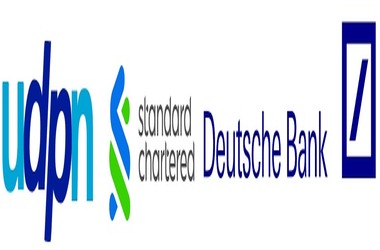
Addressing the Interoperability Challenge:
One of the chief objectives of UDPN is to confront the hurdles faced by current digital currency offerings. The proliferation of CBDCs, stablecoins, and deposit tokens has underscored a concerning lack of interoperability. Presently, interoperability between stablecoins primarily relies on centralized cryptocurrency exchanges, which raises questions about oversight and regulation. Furthermore, the widespread acceptance of digital currencies necessitates stringent adherence to Know Your Customer (KYC) and Anti Money Laundering (AML) regulations.
Decentralized Identity Infrastructure:
UDPN emerges as a solution to these challenges by offering a decentralized identity infrastructure. It facilitates compliance and cross-chain interoperability through the exchange of messages, rather than currencies. Crucially, actual currency transactions take place on their respective native blockchains or infrastructures. This innovative approach empowers users to seamlessly swap, for instance, a USDC stablecoin on one network for a Euro stablecoin on another or a bank deposit token.
A Successful Proof of Concept:
The recent UDPN PoC demonstrated the network’s potential. During the trial, Standard Chartered’s SC Ventures executed real-time transfers and swaps of synthetic USDC and EURS (Stasis Euro stablecoin) to Deutsche Bank wallets, and vice versa. SC Ventures leveraged UDPN software development kits (SDKs) and application programming interfaces (APIs), while Deutsche Bank utilized a graphical user interface for these operations.
Deutsche Bank’s Perspective:
Rafael Otero, CTO & CPO of Deutsche’s Corporate Bank division, emphasized the significance of the industry pilot on the UDPN platform. He highlighted it as an opportunity for Deutsche Bank to explore ways to actively engage its clients in the decentralized global economy of the future and leverage applications built on top of this network. Otero sees this as a logical progression in the realm of financial transactions.
Diverse Use Cases:
The StanChart and Deutsche Bank trial is just one of the twelve PoCs slated by the UDPN. These encompass a wide array of use cases, including enabling banks to issue deposit tokens for client use and facilitating interbank wholesale settlements. Another PoC seeks to support gasless transactions on a public blockchain.
Why Messaging for Digital Currencies?
The choice of messaging as the foundation for digital currencies may raise questions. In traditional setups, a core advantage of digital currencies is the seamless combination of the message (the instruction) with the actual money transfer. This approach accelerates transactions, eliminates the need for reconciliation, and enables atomic settlements where both sides of a transaction either succeed or fail. In stark contrast, a messaging-based system can lead to a situation where one side of the transaction fails.
Interoperability as the Motivation:
The rationale behind opting for messaging becomes clear when considering the urgent need for interoperability. Blockchain interoperability remains a work in progress. Instances like bridges facilitating public blockchain interoperability have been the source of most losses due to hacks and smart contract vulnerabilities. Although there are promising projects in the works, such as the Regulated Liability Network, they are still in their infancy.
Exploring Other Initiatives:
Recent initiatives have explored alternative approaches to connect CBDCs. Swift, for instance, conducted trials for a messaging solution to link various CBDCs. Additionally, conventional integration methods utilizing APIs and routing networks, like finP2P, are being explored as well.
In conclusion, the successful completion of the Universal Digital Payments Network’s PoC marks a significant milestone in the financial sector. This initiative promises to unlock new possibilities for the seamless integration of digital currencies, addressing critical interoperability issues. With banks like Standard Chartered and Deutsche Bank at the forefront of this transformative development, the future of digital payments and blockchain interoperability looks promising.